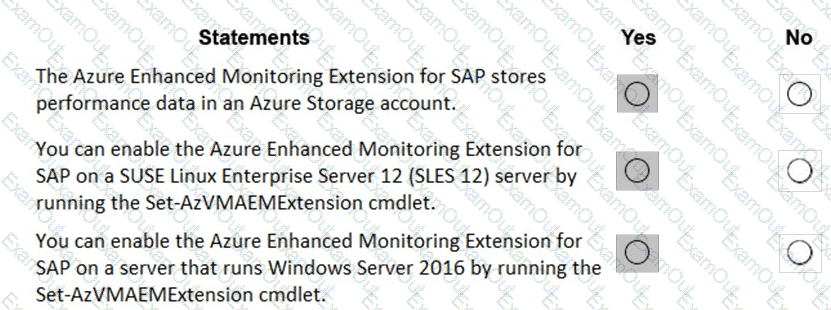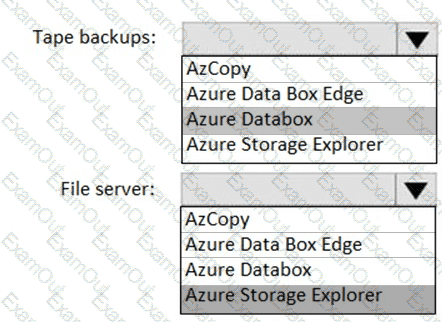You have an Azure subscription.
You plan to deploy a QA landscape to SAP on Azure by using Azure Center for SAP solutions.
You need to use the Azure command-line interface (CLI) to deploy the landscape.
How should you complete the command? To answer, select the appropriate options in the answer area.
NOTE: Each correct selection is worth one point.

You deploy an SAP environment on Azure by following the SAP workload on Azure planning and deployment
checklist.
You need to verify whether Azure Diagnostics is enabled.
Which cmdlet should you run?
You have a Recovery Services vault backup policy for SAP HANA on an Azure virtual machine as shown in the following exhibit.
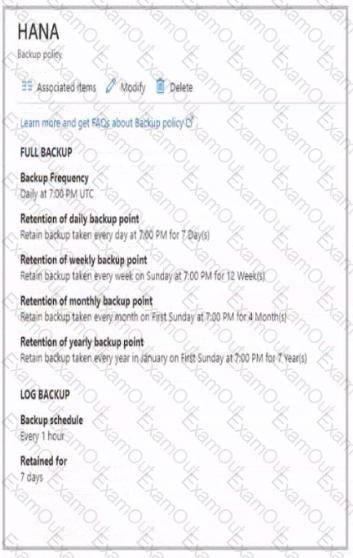
Use the drop-down menus to select the answer choice that completes each statement based on the information presented in the graphic.
NOTE: Each correct selection is worth one point.
For each of the following statements, select Yes if the statement is true. Otherwise, select No.
NOTE: Each correct selection is worth one point.
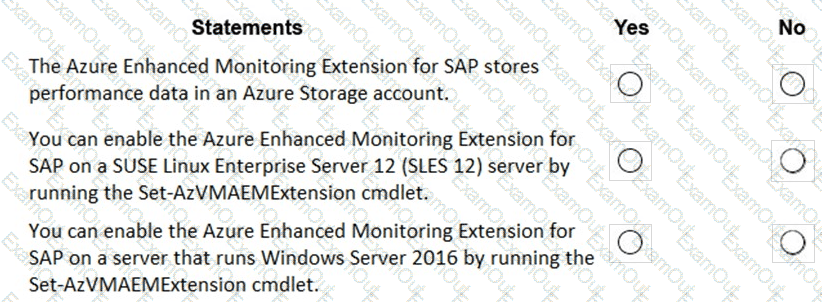
You have an SAP on Azure landscape. You need to gather the following metrics:
• The network latency between an SAP NetWeaver server and an SAP HANA server.
• The throughput and latency of the storage subsystem on Windows Server and Linux platforms
What should you use for each metric? To answer, select the appropriate options in the answer area. NOTE: Each correct selection is worth one point.

You have an SAP NetWeaver deployment hosted on Azure virtual machines that run SUSE Linux Enterprise Server (SLES) and are configured as a Pacemaker cluster.
You need to monitor the deployment by using Azure Monitor for SAP Solutions.
What should you install first on the cluster nodes?
You have an Azure subscription named Sub! that contains a Microsoft Sentinel workspace named Workspace1.
You have an SAP RISE managed workload that is integrated with Sub1.
You need to implement the Microsoft Sentinel solution for SAP applications in Workspace1. The solution must meet the following requirements:
• Generate an incident based on transaction codes when a sensitive SAP transaction is executed by an unauthorized user.
• When an incident is generated, send a notification to a designated Microsoft Teams channel.
• Minimize administrative effort.
What should you include in the solution? To answer, select the appropriate options in the answer area. NOTE: Each correct selection is worth one point.

You have highly available deployment of SAP NetWeaver on Azure that uses a third-party solution for clustering ABAP SAP Central Services (ASCS) components.
You need to recommend a solution to reduce the cost of shared storage for the components.
What should you include in the recommendation?
You have an on-premises SAP environment.
Backups are performed by using tape backups. There are 50 TB of backups.
A Windows file server has BMP images of checks used by SAP Finance. There are 9 TB of images.
You need to recommend a method to migrate the images and the tape backups to Azure. The solution must maintain continuous replication of the images.
What should you include in the recommendation? To answer, select the appropriate options in the answer area.
NOTE: Each correct selection is worth one point.
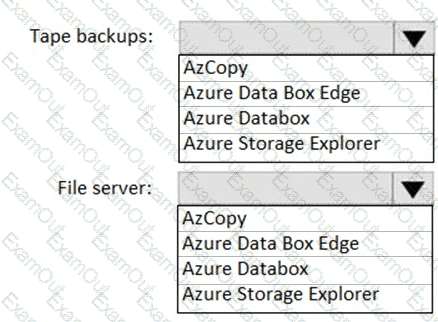
You have an on-premises SAP NetWeaver application server and SAP HANA database deployment.
You plan to migrate the on-premises deployment to Azure.
You provision new Azure virtual machines to host the application server and database roles.
You need to initiate SAP Database Migration Option (DMO) with System Move.
On which server should you start Software Update Manager (SUM)?




